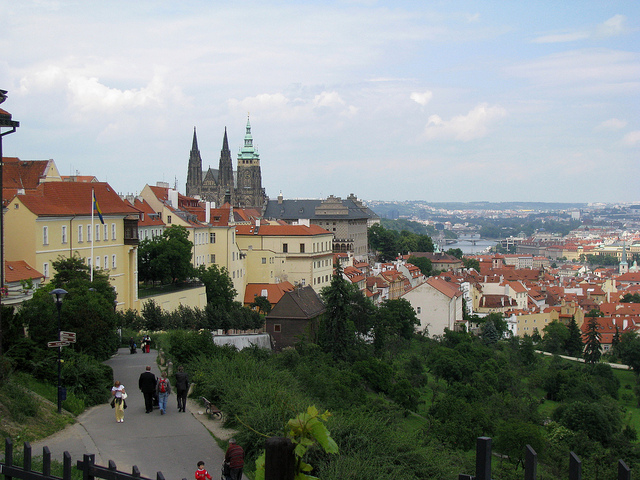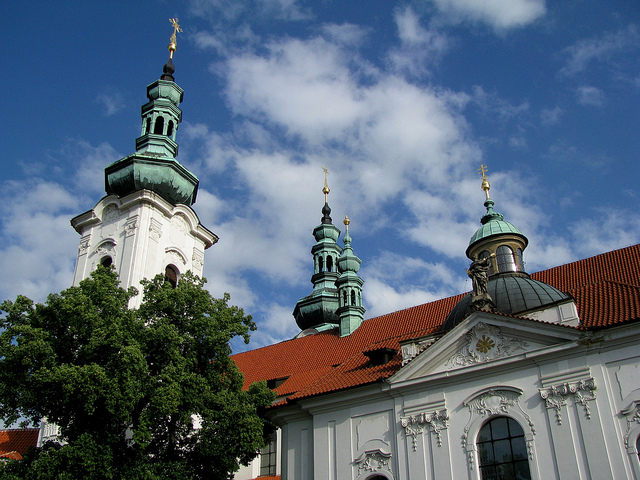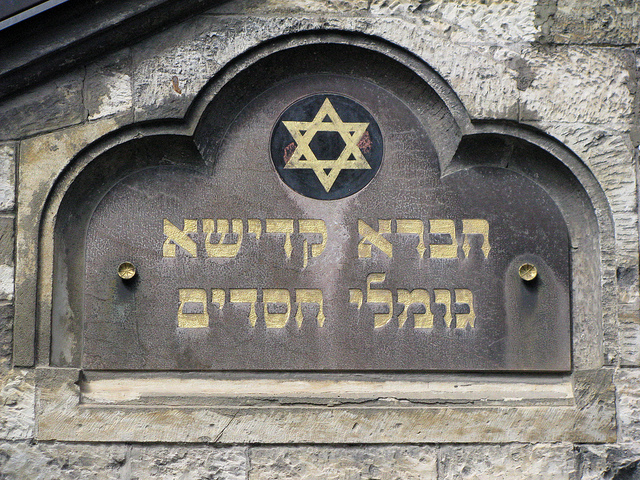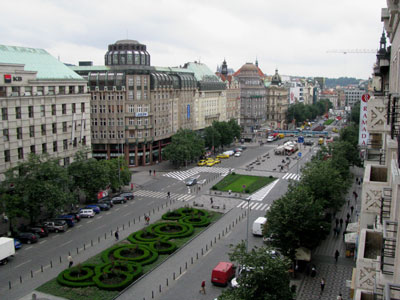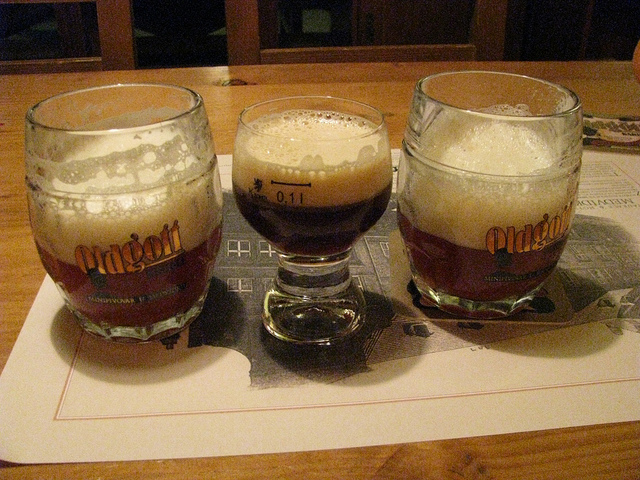As the late afternoon sun had come out, I was continuing my action-packed day in Prague. After a guided tour through Prague’s Jewish Quarter, a savory and informative lunch in Prague’s oldest kosher restaurant, followed by a tour of Municipal House, Prague’s Art Nouveau masterpiece, I had just finished a boat tour on the Vltava River that gave me a completely different view of Prague from the water. Our knowledgeable captain had shared many stories about Prague and enriched us with countless historical tidbits about this fascinating city.

Walking across the Charles Bridge
During my last few hours in Prague I was planning to explore Mala Strana, one of the main historical areas on the west side of the river. Crossing the famous Charles Bridge, I passed by the 30 baroque religious statues that line the bridge. My stroll continued past various street artists, painters and souvenir vendors who were displaying their merchandise right on top of this historic river crossing. One of the bridge’s statues had attracted a large crowd of people lining up. I was wondering what the big commotion was all about, so I joined the queue myself. As I moved along I realized that everyone wanted to rub the plaques on the statue of St. John Nepomuk, the Czech martyr saint who was executed in the 14th century when he was thrown into the Vlatava. The plaques have been polished to a shine by the thousands of people hoping for good luck.

Rubbing St. John Nepomuk for good luck
On the west side of the Charles Bridge I had arrived in Mala Strana, which is translated in English as the “Little Quarter” or the “Lesser Quarter”. This part of town was mostly settled by ethnic German residents during the Middle Ages. Mala Strana was created in 1257 when several villages were amalgamated. One of the well-known landmarks in this part of town is the Church of Saint Nicholas, a baroque masterpiece created by the father-and-son team of Christoph and Killian Dientzenhofer. Starting in 1703, this impressive church took almost 60 years to build.

The baroque splendour of the Church of St. Nicholas
Another popular sight in the Little Quarter is the Palace of Albrecht von Wallenstein, a Catholic general who was responsible for a string of victories over the Protestants in the Thirty Years War (1618 to 1648). Wallenstein’s intention was to overshadow even Prague Castle, and to this end the general demolished 25 houses, three gardens and a city gate and built the city’s first baroque palace. Today Wallenstein Palace is home to the Czech senate and can be visited only on weekends.

Colourful houses in Mala Strana
On cobble-stoned streets I walked southwards to reach another popular attraction in Prague: the funicular railway that has been carrying passengers up Petrin Hill for almost 120 years. Built in 1891 for the Jubilee Exhibition, this inclined railway was closed for almost 20 years in 1965 after a hillside collapsed as a result of coal mining that had taken place here in the 19th century. Finally in 1985 the funicular reopened and continues to be one of Prague’s popular landmarks.

Looking out the funicular as we start climbing Petrin Hill
Having arrived at the top after the 510 metre ride, I exited into the rose garden that surrounds the hilltop station on Petrin Hill. After a quick stroll I arrived at another famous Prague landmark: the Petrin Lookout Tower, essentially a miniature version of the Eiffel Tower which was also built in 1891, two years after the Parisian original. Apart from the height, a key difference between the two structures is that the Petrin Tower has an octagonal cross-section while the Eiffel Tower has a square base. The tower offers a great view of the Prague skyline.

Prague’s unique observation tower
Petrin Hill is covered by a sizeable forest that is criss-crossed by numerous walking paths. A long defensive wall called the Hunger Wall snakes its way through the forest. Originally built from 1360 to 1362, it was part of an extensive fortification system surrounding Prague Castle. The wall was indeed constructed during a period of intense famine, and its construction helped to provide a livelihood for the city’s poor residents.

A gorgeous view towards Prague’s Castle Hill
Once I came out of the forest on a walking path below Strahov Monastery, I sat down on a bench and enjoyed the magnificent view over the City of Prague and Prague Castle. The city was stretching out below the gardens and orchards of Petrin Hill, and the curved ribbon of the Vltava River was glistening in the late afternoon sun.

A colourful feathered visitor on Petrin Hill
